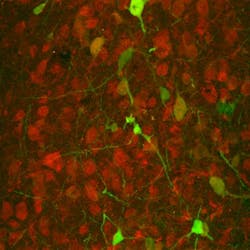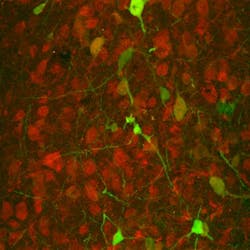Optogenetics could lead to better understanding of anxiety, depression
Neuroscientists from Ruhr University Bochum in Germany and colleagues have discovered that optogenetics—a method that uses genes to make neurons respond to light—can modify serotonin receptors to help better understand anxiety and depression's origins.
Related: Optogenetics studies show that different stressors induce depression in distinct ways
Related: Optogenetics tools address a growing range of applications
One receptor important for the regulation of serotonin levels in the brain is the 5-HT1A receptor, which belongs to a protein family called G protein coupled receptors (GPCRs). These receptors can activate different signaling pathways in cells to support or suppress various signaling events. Prof. Dr. Stefan Herlitze of the Department of General Zoology and Neurobiology at Ruhr Univeristy Bochum explains that about 30 percent of drugs used to treat anxiety and depression target GPCRs, but due to the lack of tools to control intracellular signaling pathways with high temporal and spatial accuracy, it has been difficult to analyze these pathways precisely.
Applying optogenetics, the researchers used cone opsins from the mouse and human eye to control specifically serotonin signaling pathways either with blue or red light. The light-activated serotonin receptors can be switched on within milliseconds, are extremely light-sensitive in comparison to other optogenetic tools, and can be repetitively activated. "We hope that with the help of these optogenetic tools, we will be able to gain a better understanding about how anxiety and depression originate," states Dr. Olivia Masseck, a neuroscientist at Ruhr University Bochum.
The scientists also demonstrated that they were able to modulate mouse emotional behavior using the light-activated receptors. When they switched on the serotonergic signals by light in a certain brain area, the mice became less anxious.
Full details of the work appear in the journal Neuron; for more information, please visit http://dx.doi.org/10.1016/j.neuron.2014.01.041.
-----
Follow us on Twitter, 'like' us on Facebook, and join our group on LinkedIn
Subscribe now to BioOptics World magazine; it's free!

